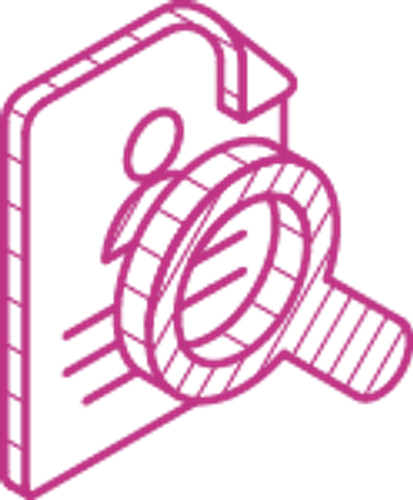Building a Business Case for a Train to Deploy Workforce Strategy
What is a Train to Deploy Workforce Strategy?
Train to Deploy is a scalable, future-focused workforce solution. It replaces legacy recruitment with a sustainable approach that combines behaviour-first hiring with bespoke, role-specific training, enabling you to deploy work-ready people aligned with your business from day one. Here’s how to position a Train to Deploy workforce strategy as the strategic answer your business needs now.
Step 1: Define the Problem Clearly
Before you pitch a solution, your first job is to make the cost of doing nothing impossible to ignore. Here are 5 signs your workforce needs a Train to Deploy strategy to get you started. Use hard data to show where your current hiring model is falling short and what that’s costing you. Start by asking questions your leaders will care about:
Skills gaps
Are the same roles being readvertised month after month?
Are niche capabilities slowing or stalling project delivery?
Is critical knowledge walking out the door as retirements rise?
Project risk
Are high vacancy rates impacting timelines and team cohesion?
Do long onboarding periods stall delivery and productivity?
Can your team scale quickly enough for upcoming project peaks?
If time-to-hire is 45+ days and onboarding takes another 30+ days, how much delivery time are you losing?
Diversity gaps
Are legacy hiring filters limiting access to diverse, high-potential candidates?
Are you falling short on DEI or ESG bid requirements in public sector or regulated tenders?
Do you lack scalable, measurable programmes to attract, develop, and retain under-represented talent?
Step 2: Quantify the Cost of Inaction
Your goal is to then articulate the long-term risks of continuing with business as usual. To get stakeholder buy-in, you need to frame the commercial impact of inaction. Make sure you define both direct costs and knock-on consequences of not addressing your current approach.
Recruitment costs
Add up your full cost per hire: agency fees, internal resource time, readvertising, interview panels, onboarding, and early attrition.
The average cost per hire in the UK is £3,000–£5,000. For 30 hires per year, that’s £90K - £150K before you account for the cost of replacing those who leave early.
Then factor in:
First-year attrition
Contractor spend to plug gaps
Time-to-productivity lag with ramp-up times resulting in value not being delivered
Productivity loss and project delays
Every week a role remains unfilled, you lose delivery hours. Every month a new hire is onboarding, and your project velocity drops.
Delayed milestones = missed SLAs or penalty clauses
Lost momentum = increased risk of burnout in stretched teams
Lower team efficiency = knock-on delays in other workstreams
Even a 10-day hiring delay across 5 projects can equate to hundreds of lost delivery hours or tens of thousands in opportunity cost.
Missed ESG & social value metrics
For public sector frameworks and many regulated sectors, bids require proof of community investment and inclusive hiring. If you’re failing to demonstrate social value or provide measurable DEI outcomes, you could be missing out on commercial opportunities.
Step 3: Train to Deploy Proposition
Once you’ve demonstrated the cost of inaction, you’ll need to demonstrate how a Train to Deploy workforce strategy can address the real problem. Your workforce model no longer fits today’s reality.
Behaviour-first sourcing
Instead of relying on CVs and past job titles, Train to Deploy starts with what really matters: mindset, adaptability, learning agility, and culture fit.
How it solves the problem:
Increases retention by hiring based on long-term fit; when people align with your values and environment from day one, they’re more likely to stay long term.
Helps de-risk hiring by aligning people to your ways of working before they start
TTD solutions remove traditional hiring barriers, opening doors to all those able to demonstrate the right behaviours and potential, regardless of their background or circumstances.
We call this “inclusion without limits”: if someone has the right behaviours, we build the skillset.
Bespoke, role-aligned training
A Train to Deploy programme delivers tailored technical development, embedding the systems, standards, and compliance frameworks your teams use day-to-day.
How it solves the problem:
It simplifies procurement with one contract and one partner, with complete visibility.
Shortens onboarding time as readiness is built into the training
Increases long-term capability with all hires being trained to the same standards and expectations as your existing teams. Meaning less need for post-hire correction, shadowing, or retraining.
New hires start work with the right frameworks, protocols, and requirements, improving compliance and operational risk.
We co-design the training with you and act as a conduit between your business and training providers while managing the heavy lifting of sourcing, screening, training, deployment, and mentoring.
Deploying work-ready talent
After training, talent is deployed directly into your team, already aligned with your culture, systems, and technical needs. The transition is seamless because we’ve already embedded your systems, culture, and team dynamics into their preparation. We also offer mentoring and coaching during deployment to support success.
The benefits:
Enables faster productivity and better collaboration
Builds confidence and cohesion in high-stakes environments
Supports smoother team integration and day-one impact
Scalable, predictable talent pipelines
With TTD, rather than reacting to workforce gaps, you’re building capability in anticipation of future need. Whether for seasonal peaks, project launches, or expansion into new capabilities, you can scale talent development in line with strategic goals.
The benefits:
Reduces contractor reliance by developing permanent, aligned talent
Smooths hiring cycles with a predictable, flexible pipeline
Helps you respond faster to new project requirements or capability shifts
Step 4: Anticipate Stakeholder Priorities
Your case needs to work across commercial, operational, and organisational priorities. Read our quick rundown of the ROI of building talent internally. Here’s how to tailor your message to what matters most to each stakeholder:
Finance
Long-term cost avoidance with fewer agency fees, less attrition/higher retention, fewer cycles of rehiring, and reduced onboarding lag
Reduced dependency on costly contractors with internal pipeline
Long-term cost predictability and spend control through a single all-in solution
“We can reduce agency costs by 30–50% and improve first-year retention by 40% with a Train to Deploy workforce strategy.”
Procurement
Ability to consolidate vendor management with one trusted supplier managing sourcing, training, and deployment
Alignment with existing workforce, training frameworks, and compliance with industry and safety regulations
Commercial flexibility to scale up or down based on needs
Operations
Highlight reduced time-to-productivity and onboarding lag with bespoke training embedding tools and systems into learning
Readiness in safety-critical and regulated environments through training
Demonstrate retaining institutional knowledge through structured training, shadowing, and handovers
Highlight reduced dependency on external contractors with an aligned, trained internal pipeline
CSR / DEI Leads
Inclusion with real impact on career switchers, returners, veterans, and under-represented communities
Measurable progress on social value targets through inclusive pathways
Position TTD as truly inclusive hiring.
Rullion’s model focuses on “inclusion without limits”; the door is open to all those who have the right behaviours and potential.
Step 5: Building a Clear Case for Change
Reframe the narrative from patching your hiring process to building capability for the future. This can help shift the conversation from “Why would we?” to “Why wouldn’t we?”
Current Approach
Train to Deploy
Plugging gaps
Building long-term capability
Spending reactively
Investing in readiness
Chasing CVs
Developing aligned, inclusive talent
Onboarding after hiring
Delivery work-ready teams from day one












